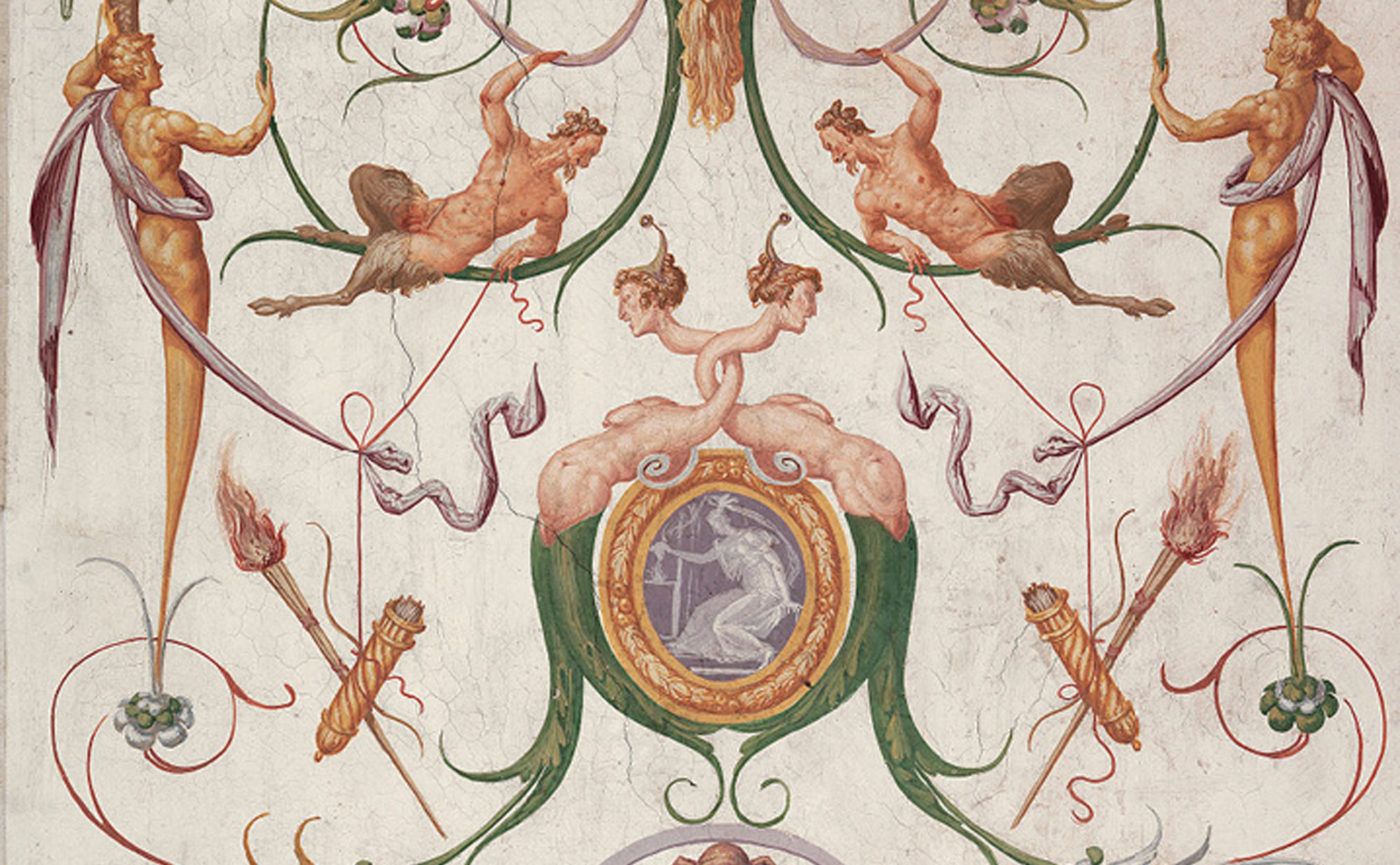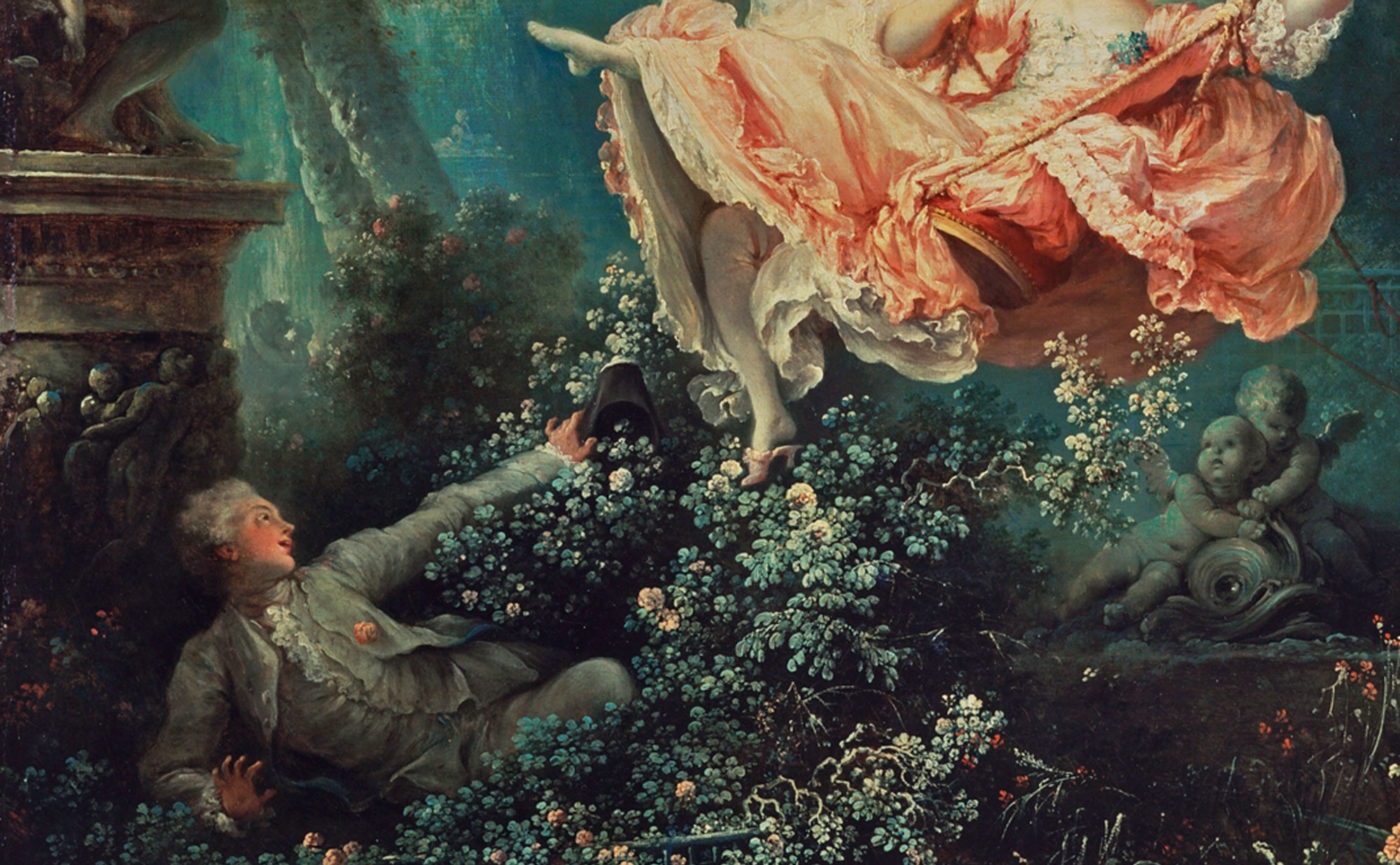Andy Warhol, Brillo Box (Soap Pads). 1964, MoMA Mi è più volte capitato, e sarà di certo accaduto anche a voi, d’imbattervi in qualcuno al quale, chiedendogli che lavoro svolge, con sconfortante ingenuità, vi siete sentiti rispondere “l’artista”. Ogni qualvolta ciò accade, per quanto mi concerne, provo per costoro profondo imbarazzo e pena e un irrefrenabile desiderio di scapparmene a gambe levate. È dunque sufficiente un’autodichiarazione a dare ruolo e significato alla propria esistenza, a porsi un poco più […]
Jean-Honoré Fragonard, Les hasards heureux de l’escarpolette (detail), 1767-68, Wallace Collection, London, photo Alonso de Mendoza The provenance of an author’s language, from a previous tradition, is therefore part of the dynamics of normalization (a process whereby an innovative or exceptional phenomenon, over several decades, spreads in the popular imagination), although it does not deprive it of the research content that instead continues. He takes up a discourse that comes to him from afar. He discovers that he is […]
Jean-Honoré Fragonard, Les hasards heureux de l’escarpolette (dettaglio), 1767-68, Wallace Collection, Londra, foto Alonso de Mendoza La provenienza del linguaggio di un autore, da una precedente tradizione, rientra nella dinamica della normalizzazione (processo per il quale un fenomeno innovativo o eccezionale, nel corso di alcuni decenni, si diffonde nell’immaginario popolare), seppure egli non la priva del contenuto di ricerca che invece prosegue. Egli riprende un discorso che gli giunge da lontano. Si scopre figlio di una discendenza alla quale […]
Edward Munch, Puberty (detail), 1894-95, Oslo National Gallery The works of Edward Munch (1863-1944) have fascinated me more and more over the years. In Puberty of 1894-95, certain formal and perspective distortions typical of his mature language, to which this painting belongs, are not present. This work has a more intimate or apparently less explosive character than his other more violent and strident works, both in terms of colour and formal forcing. The explosiveness of this painting resides in […]
Edward Munch, La pubertà (particolare), 1894-95, Galleria Nazionale di Oslo Le opere di Edward Munch (1863-1944) nel corso del tempo mi hanno affascinato sempre più. Ne La pubertà del 1894-95 certe distorsioni formali e prospettiche tipiche del suo linguaggio maturo, al quale questo dipinto appartiene, non sono presenti. Questo lavoro ha un carattere più intimo o apparentemente meno esplosivo rispetto ad altre sue opere più violente e stridenti cromaticamente e nelle forzature formali. L’esplosività di questo dipinto risiede in […]
Caspar David Friedrich, Der Mönch am Meer, 1808-09 If the composition concerns the course of an image (horizontal, vertical, diagonal ascending / descending), the framing determines the point of view that the author has assigned to the viewer’s gaze, demonstrating that the image is designed specifically for him, for his involvement. The choice of the framing is therefore essential for the conveyance of the message, being able to place the viewer in a dominant or inferior position, protagonist or […]
Caspar David Friedrich, Der Mönch am Meer, 1808-09 Se la composizione concerne l’andamento di un’immagine (orizzontale, verticale, diagonale ascendente/discendente), l’inquadratura determina il punto di vista che l’autore ha assegnato allo sguardo dello spettatore, a testimonianza che quell’immagine è pensata proprio per lui, per il suo coinvolgimento. La scelta dell’inquadratura è quindi essenziale per la veicolazione del messaggio, potendo porre lo spettatore in posizione dominante o succube, protagonista o esterno. Portiamo subito degli esempi del suo impiego nell’area pubblicitaria. Le […]
Illustration by Daniel Haskett (detail) We have already observed how colour can create spatial artificialities (https://www.danilosantinelli.it/danilos-blog/spatial-use-of-colour/), but this process of showing something that does not exist in fact, is a practice usually used by authors of images, who through our experience of reality put us in a position of co-authors, or rather, assign us the task of completing the visual text. This aspect will certainly be clearer with the help of some examples. Looking at this image of Asterix, […]







